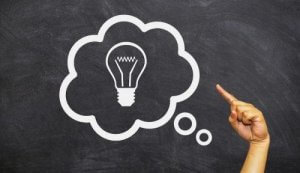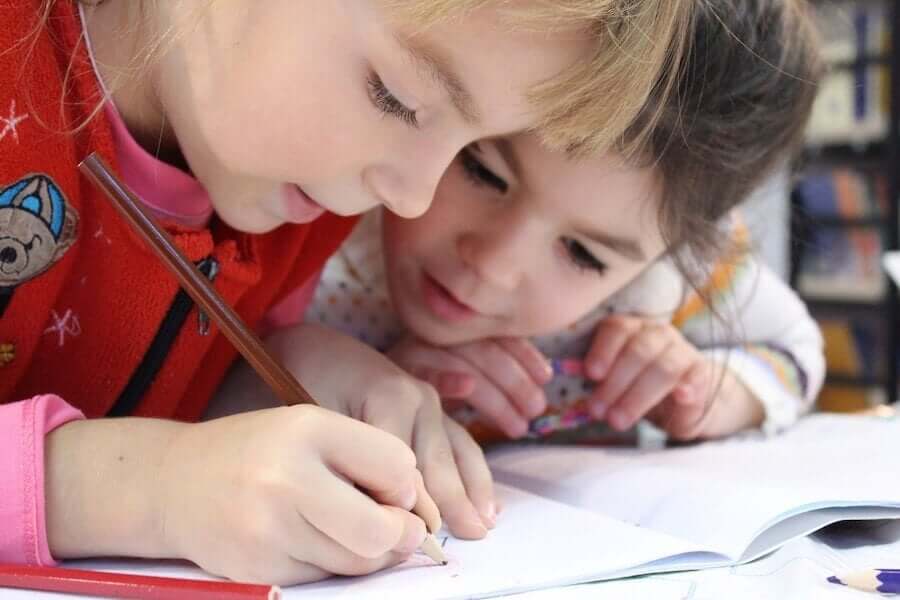All About Bruner's Theory of Learning


Written and verified by the psychologist María Alejandra Castro Arbeláez
Bruner’s theory of learning represents an important paradigm shift in regards to traditional education. This theory delves into the need for constructivist learning, or in other words, learning through discovery.
In the following article, we’ll take a look at the most important aspect of this interesting theory.
What does Bruner’s theory of learning consist of?
Bruner’s theory of learning was developed by American psychologist and pedagogue Jerome Bruner. And, as we’ve already said, the theory consists of learning based on a cognitive and constructivist structure.
Bruner’s theory produced important changes in education during the 1960s. Today, it’s still considered one of the most accepted guides for educators in the entire world.
Bruner suggests a theory of learning based on self-discovery. In other words, students acquire knowledge on their own. Of course, a tutor is always present to guide the process and motivate each student’s curiosity.

This theory claims that it’s not enough to simply impart information. Each learner must also process information and give it their own meaning.
Therefore, it’s important that each student’s curiosity be the principle guide in this entire process. So, Bruner created a categorization system that makes it possible to classify external information more effectively. The goal is to facilitate understanding and comprehension of reality.
Basic aspects of Bruner’s theory of learning
According to Bruner, individuals shouldn’t behave passively as they receive outside information. Rather, students should be the protagonists of the entire learning process. That way, they can comprehend and process all information in a more effective manner.
1. Enactive representation (0–1 years)
During the first months of life, babies learn through enactive representation. Their learning comes from their direct interaction with objects. For example, using silverware, shaking a rattle, etc.
2. Iconic representation (1–6 years)
Iconic representation is one of the techniques recommended by Bruner’s theory of education. Children learn through different visual elements that don’t have any symbolic significance attached, but are recognizable.
The technique is perfect for ages three and up, which is when children achieve a greater level of cognitive development.
3. Symbolic representation (7 years and up)
Symbolic representation is learning that children obtain through language, words, imitations, abstractions and concepts. In this case, they must have a much more developed intellectual level than in the two previous stages.

The benefits of the learning theory
Reinforces self-esteem
One of the greatest benefits of Bruner’s theory of learning is that it benefits and strengthens sense of security and self-esteem in children. With this type of learning, they overcome the limits that exist in traditional education.
Encourages creativity
Bruner’s theory of learning encourages creativity in children. Littles ones must look for different solutions to problems in a creative way. Furthermore, the theory also maximizes the development of metacognitive strategies, with which children learn.
Introduces critical thinking
Bruner’s theory of learning also encourages critical and individual thinking. In this sense, students develop their own hypotheses based on natural curiosity. What’s more, they also learn to think and solve problems for themselves. They must demonstrate their hypotheses through a mechanical system.
Bruner’s theory of learning to this day continues to break the barriers of traditional education. Self-discovery, curiosity, the classification of learning and the representations of each developmental stage made up a transcendental part of this type of learning.
Bruner’s theory of learning represents an important paradigm shift in regards to traditional education. This theory delves into the need for constructivist learning, or in other words, learning through discovery.
In the following article, we’ll take a look at the most important aspect of this interesting theory.
What does Bruner’s theory of learning consist of?
Bruner’s theory of learning was developed by American psychologist and pedagogue Jerome Bruner. And, as we’ve already said, the theory consists of learning based on a cognitive and constructivist structure.
Bruner’s theory produced important changes in education during the 1960s. Today, it’s still considered one of the most accepted guides for educators in the entire world.
Bruner suggests a theory of learning based on self-discovery. In other words, students acquire knowledge on their own. Of course, a tutor is always present to guide the process and motivate each student’s curiosity.

This theory claims that it’s not enough to simply impart information. Each learner must also process information and give it their own meaning.
Therefore, it’s important that each student’s curiosity be the principle guide in this entire process. So, Bruner created a categorization system that makes it possible to classify external information more effectively. The goal is to facilitate understanding and comprehension of reality.
Basic aspects of Bruner’s theory of learning
According to Bruner, individuals shouldn’t behave passively as they receive outside information. Rather, students should be the protagonists of the entire learning process. That way, they can comprehend and process all information in a more effective manner.
1. Enactive representation (0–1 years)
During the first months of life, babies learn through enactive representation. Their learning comes from their direct interaction with objects. For example, using silverware, shaking a rattle, etc.
2. Iconic representation (1–6 years)
Iconic representation is one of the techniques recommended by Bruner’s theory of education. Children learn through different visual elements that don’t have any symbolic significance attached, but are recognizable.
The technique is perfect for ages three and up, which is when children achieve a greater level of cognitive development.
3. Symbolic representation (7 years and up)
Symbolic representation is learning that children obtain through language, words, imitations, abstractions and concepts. In this case, they must have a much more developed intellectual level than in the two previous stages.

The benefits of the learning theory
Reinforces self-esteem
One of the greatest benefits of Bruner’s theory of learning is that it benefits and strengthens sense of security and self-esteem in children. With this type of learning, they overcome the limits that exist in traditional education.
Encourages creativity
Bruner’s theory of learning encourages creativity in children. Littles ones must look for different solutions to problems in a creative way. Furthermore, the theory also maximizes the development of metacognitive strategies, with which children learn.
Introduces critical thinking
Bruner’s theory of learning also encourages critical and individual thinking. In this sense, students develop their own hypotheses based on natural curiosity. What’s more, they also learn to think and solve problems for themselves. They must demonstrate their hypotheses through a mechanical system.
Bruner’s theory of learning to this day continues to break the barriers of traditional education. Self-discovery, curiosity, the classification of learning and the representations of each developmental stage made up a transcendental part of this type of learning.
All cited sources were thoroughly reviewed by our team to ensure their quality, reliability, currency, and validity. The bibliography of this article was considered reliable and of academic or scientific accuracy.
- Abarca Cordero, J. C. (2017). Jerome Seymour Bruner: 1915-2016. Revista de Psicología (PUCP), 35(2), 773-781. Disponible en: http://www.scielo.org.pe/scielo.php?script=sci_arttext&pid=S0254-92472017000200013
- Bruner, J. S., & Olson, D. R. (1973). Aprendizaje por experiencia directa y aprendizaje por experiencia mediatizada. Perspectivas, 3(1), 21-41. Disponible en este enlace.
- Cálciz, A. B. (2011). Metodologías activas y aprendizaje por descubrimiento. Revista digital innovación y experiencias educativas, 7(40), 1-11. https://archivos.csif.es/archivos/andalucia/ensenanza/revistas/csicsif/revista/pdf/Numero_40/ALEJANDRA_BARO_1.pdf
- Guilar, M. E. (2009). Las ideas de Bruner: de la revolución cognitiva a la revolución cultural. Educere, 13(44), 235-241. http://www.scielo.org.ve/scielo.php?pid=S1316-49102009000100028&script=sci_arttext
- Morales Mendoza, L. A. (2022). Incidencia de los principios teóricos de Jerome Bruner en la resolución de problemas. http://repositoriodspace.unipamplona.edu.co/jspui/bitstream/20.500.12744/5069/1/Morales_2021_TG.pdf
- Oyarbide, M. A. (2004). Jerome Seymour Bruner: de la percepción al lenguaje. Revista Iberoamericana de educación, 34(1), 1-19. https://rieoei.org/RIE/article/view/2902
- Pozo, J. I. (1989). Teorías cognitivas del aprendizaje. Ediciones Morata.
- Ramos, A. H. A. (2021). Incidencia de la Mayéutica en la Pedagogía constructivista. Eleuteria, 17(64), 1. http://www.eleutheria.ufm.edu/ArticulosPDF/210321_axel_aceituno_mayeutica_pedagogia.pdf
- Vielma Vielma, E., & Salas, M. L. (2000). Aportes de las teorías de Vygotsky, Piaget, Bandura y Bruner. Paralelismo en sus posiciones en relación con el desarrollo. Educere, 3(9). https://www.redalyc.org/html/356/35630907
This text is provided for informational purposes only and does not replace consultation with a professional. If in doubt, consult your specialist.








